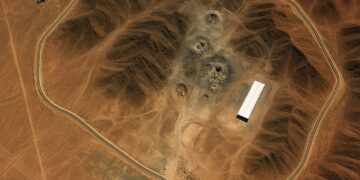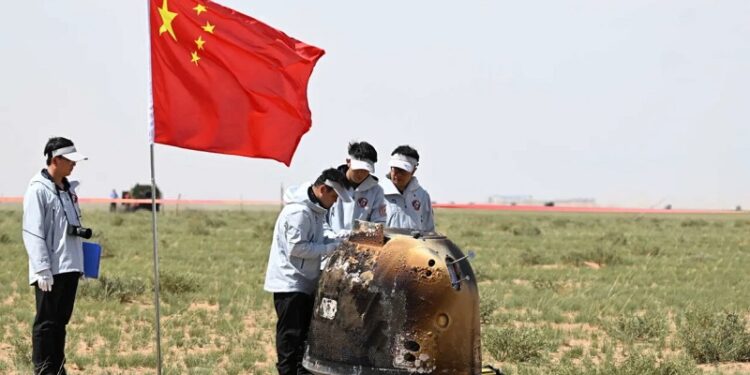China’s Historic Return of Moon Samples from the Far Side: A Milestone in Lunar Exploration
Chinese President Xi Jinping celebrated the monumental accomplishment of the Chang’e-6 lunar mission as the first samples of rocks gathered from the far side of the Moon were successfully brought back to Earth on Tuesday at 2:07 pm Beijing time [6:07 am in Europe]. This groundbreaking event, reported by the Hong Kong newspaper South China Morning Post, marks China’s pioneering venture as the first nation to retrieve rocks from the far side of the Moon, solidifying its ambitious pursuit of exploring our natural satellite and extending its reach into various corners of the Solar System.
The Chang’e-6 mission, launched from the Wenchang base in southern China on May 3, spanned a duration of fifty-three days. Venturing from Earth, the mission spacecraft reached the Moon five days post-launch, spent some time in orbit, and eventually deployed its probe to land at the onset of June within a region of the South Pole-Aitken basin – the largest impact basin on the Moon’s surface.
Following forty-eight hours of meticulous sampling utilizing a drill and a robotic arm, the probe departed from the Moon, rendezvoused with the orbiting reentry module, and commenced its journey back to Earth carrying a cargo of rocks, dust, and pebbles. Insights into the Moon’s interior
One of the key objectives of the Chang’e-6 mission is to facilitate a detailed examination of an area on the Moon that starkly contrasts with the familiar visible side observed from Earth. While previous missions have brought back samples from the visible side – characterized by expansive dark plains formed by ancient lava flows – the far side presents a distinct geological landscape featuring fewer such plains and more craters along with a thicker crust.
By comparing the composition of samples from the far side with those collected previously, researchers aim to enhance their understanding of seismic activities on the Moon and the reasons behind the disparate evolutionary paths of its two sides. Additionally, they aspire to glean valuable insights into the internal structure of this celestial body, shedding light on its dynamic geological history and formation processes.














































